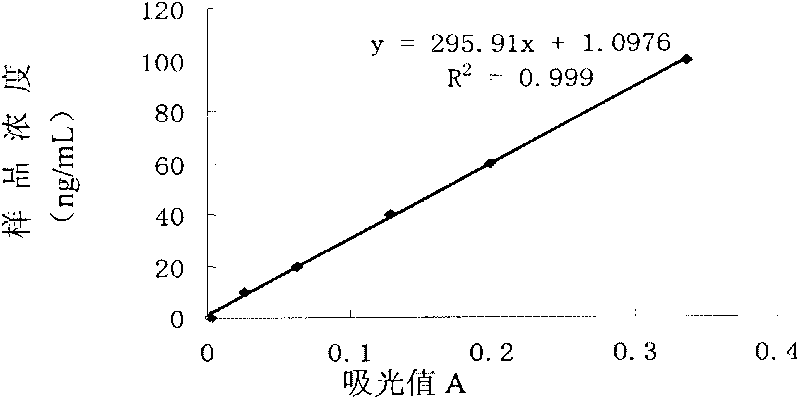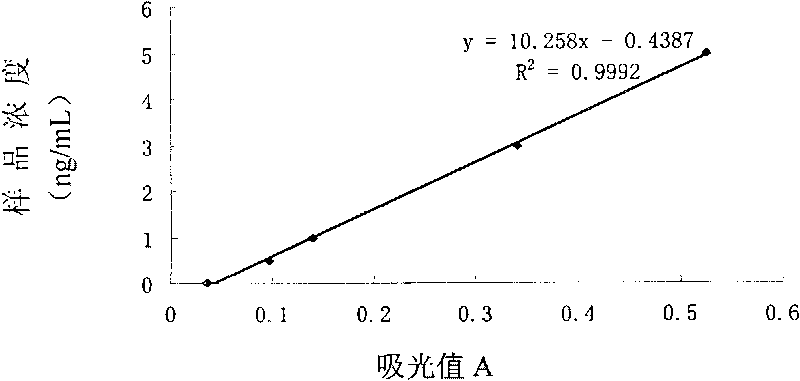Pretreating and calibrating method for sequentially determining content of lead and cadmium elements in rice
A technology of element content and rice, applied in the field of detection, can solve the problems of difficult digestion process, explosion of pressure digestion tank, loss of measurement elements, etc. effect of error
- Summary
- Abstract
- Description
- Claims
- Application Information
AI Technical Summary
Problems solved by technology
Method used
Image
Examples
Embodiment 1
[0026] (1) According to the sampling method of grain and oil, mix the early indica rice (Changsha, Hunan) samples evenly, use the Zhongding type sample divider to separate the 2Kg original samples, and then divide the samples step by step, and finally divide them into 50g each The parallel samples are processed at the same time, the samples are placed on the tray, the inorganic or organic impurities are picked out, the clean rice is hulled into brown rice by a rice huller, and the brown rice is then pulverized by a cyclone mill without moisture loss , so that all the brown rice flour can pass through a 100-mesh sieve (particle size 0.154mm), put it in a sealed bag, mix well, weigh 0.5g of the double test sample in a 30mL small beaker, number sample a and sample b, and make a reagent blank at the same time ;
[0027] (2) Soak the above sample a and sample b with 1mL superior pure concentrated nitric acid (concentrated nitric acid with a concentration of 65%) overnight. On the n...
Embodiment 2
[0038] Get early indica rice sample (place of origin Changsha, Hunan) numbering e in addition, measure wherein lead content is 0.20mg / Kg by the method described in embodiment 1, cadmium content is 0.15mg / Kg, add standard in sample by table 3 method, measure recovery The experimental data shows that the recovery rate of lead and cadmium in rice paddy using this method is between 95% and 105%.
[0039] Table 3 utilizes the standard addition recovery test result in the digestion sample of the present invention
[0040]
Embodiment 3
[0042] Take another early indica rice sample (produced in Changsha, Hunan Province) numbered f-1, f-2 and f-3, weigh several parallel samples according to the method described in Example 1, add different oxidants respectively, and number f-1 only adds Nitric acid is used as an oxidizing agent, f-2 adds nitric acid and perchloric acid (volume ratio 4 to 1) mixed acid, f-3 adds nitric acid and perchloric acid (volume ratio 4 to 1) mixed acid and at the same time, adds a small amount of hydrogen peroxide, every Three parallel samples were measured for each sample, and the measurement results are shown in Table 4. It was found that after adding perchloric acid or hydrogen peroxide in the sample, the measured values were all lower than those that only added nitric acid. It shows that perchloric acid or hydrogen peroxide will bring loss to the determination of cadmium in rice.
[0043] Table 4 adds different strong oxidants to the same sample and compares the measurement results ...
PUM
 Login to View More
Login to View More Abstract
Description
Claims
Application Information
 Login to View More
Login to View More - R&D
- Intellectual Property
- Life Sciences
- Materials
- Tech Scout
- Unparalleled Data Quality
- Higher Quality Content
- 60% Fewer Hallucinations
Browse by: Latest US Patents, China's latest patents, Technical Efficacy Thesaurus, Application Domain, Technology Topic, Popular Technical Reports.
© 2025 PatSnap. All rights reserved.Legal|Privacy policy|Modern Slavery Act Transparency Statement|Sitemap|About US| Contact US: help@patsnap.com



